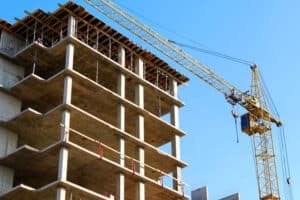What Is Visual Examination?
Visual Examination, also known as Visual Testing (VT), is the process of inspecting materials, components, or assemblies using the naked eye or simple tools like magnifying glasses, mirrors, borescopes, and cameras. It’s often the first step in the inspection process and can reveal a lot about the condition of the item being examined.
Why Choose Visual Examination for Inspection?
Detecting visible defects early can prevent failures, reduce downtime, and save costs. Visual Examination is:
- Cost-Effective: Requires minimal equipment and provides immediate results.
- Non-Intrusive: Does not harm or alter the component being inspected.
- Versatile: Applicable to virtually all materials and industries.
- Foundational: Often used to determine if further NDT methods are necessary.
Industries That Benefit from Visual Examination
Visual Examination is widely used across various sectors due to its simplicity and effectiveness. Here’s how different industries utilise it:
Oil & Gas
Regular visual inspections of pipelines, pressure vessels, and equipment help detect corrosion, leaks, and mechanical damage, ensuring safe and efficient operations.
Mining
In mining operations, visual examination of machinery and structural components helps identify wear, cracks, and other defects that could lead to failures.
Power Generation
Power plants rely on visual inspections to check boilers, turbines, and electrical systems for signs of wear or damage, preventing unexpected shutdowns.
Marine
Ships and offshore structures undergo visual inspections to detect corrosion, hull damage, and other issues that could affect seaworthiness.
Engineering & Fabrication
Manufacturers use visual examination to verify weld quality and ensure fabricated parts meet design specifications and industry standards.
Transportation
From aircraft to trains and vehicles, visual inspections are essential for checking critical components for damage or wear to maintain safety.
Construction
Visual examination of construction materials and structures helps identify defects, ensuring buildings and infrastructure are built and maintained safely.
Military & Defence
Defence equipment and infrastructure require regular visual inspections to maintain readiness and safety.
How Does the Visual Examination Process Work?
Here’s a step-by-step overview of how we perform Visual Examination:
1. Preparation
- Review Specifications: Understand the standards and acceptance criteria relevant to the component or material.
- Clean the Surface: Remove dirt, grease, paint, or other contaminants that could hide defects.
- Ensure Proper Lighting: Adequate lighting is essential for accurate inspection.
2. Examination
- Direct Visual Inspection: Inspect the surface using the naked eye or with the aid of magnifying tools.
- Remote Visual Inspection: Use equipment like borescopes or cameras to inspect areas that are difficult to access directly.
- Measurement Tools: Employ gauges, rulers, or calipers to measure dimensions and tolerances.
3. Detection of Defects
- Identify Flaws: Look for cracks, corrosion, dents, misalignments, and other surface anomalies.
- Assess Condition: Evaluate the severity of any defects found.
4. Documentation
- Record Findings: Take notes, photographs, or videos to document the condition of the component.
- Report: Prepare a detailed report outlining the findings and any recommendations for repair or further inspection.
5. Follow-Up
- Action Plan: Based on the findings, decide on necessary actions such as repairs, replacements, or additional testing.
- Re-Inspection: After corrective actions, perform another visual examination to verify that issues have been addressed.
Advantages of Visual Examination
- Non-Destructive: Does not harm the component being inspected.
- Quick and Efficient: Allows for rapid assessment without specialised equipment.
- Minimal Equipment Required: Often only requires basic tools.
- Versatile: Applicable to almost all materials and components.
- Foundational Method: Forms the basis for more advanced NDT methods.
Considerations When Using Visual Examination
- Limited Depth Detection: Can only detect surface defects; internal flaws require other NDT methods.
- Operator Skill: Requires trained and experienced inspectors to accurately identify and interpret defects.
- Environmental Conditions: Lighting, cleanliness, and accessibility can affect the accuracy of the inspection.
- Subjectivity: Interpretation of findings can vary between inspectors.
FAQs
Q: Can Visual Examination detect all types of defects?
A: Visual Examination is effective for detecting surface defects but cannot reveal internal flaws. For internal defects, methods like Ultrasonic Testing (UT) or Radiography (RT) are required.
Q: Do I need a certified inspector for Visual Examination?
A: While Visual Examination may seem straightforward, having a trained and certified inspector ensures that defects are correctly identified and evaluated according to industry standards.
Q: How often should Visual Examinations be performed?
A: The frequency depends on industry regulations, the type of equipment, and operating conditions. Regular inspections are crucial for preventive maintenance.
Q: What standards govern Visual Examination?
A: Various standards apply, such as ASME, AWS, and ISO guidelines, which specify procedures and acceptance criteria for different industries.
Q: Can Visual Examination be combined with other NDT methods?
A: Yes, Visual Examination is often the first step before applying other NDT methods. It can help identify areas that require further testing.
Ready to Ensure Your Equipment Is in Top Shape?
Visual Examination is a fundamental step in maintaining the safety and integrity of your assets. Our experienced inspectors are equipped to perform thorough visual inspections, providing you with detailed insights and recommendations.









